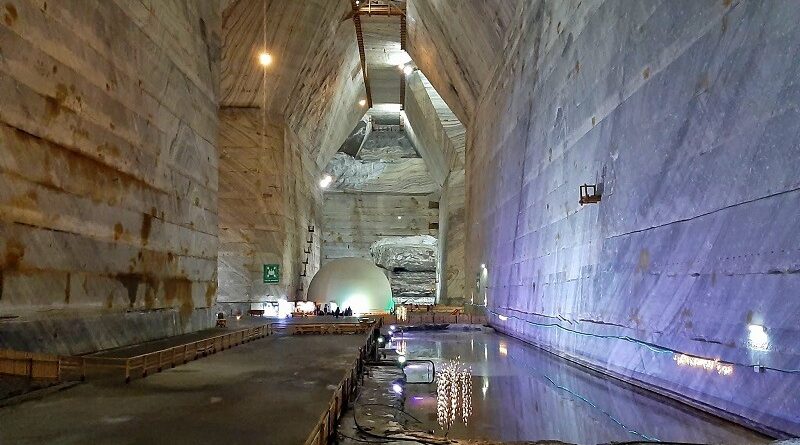Slanic Salt Mine: A Visit 208 Metres Underground
This destination guide covers a day trip from Bucharest to the Slanic Salt Mine (Salina Slănic).
A Slanic day trip
Some 100 kilometres north of Bucharest lies the small resort town of Slanic.
Located in Prahova County, Slanic is famous for its salt mine and its therapeutic salt lakes.
Especially during the summer months, the fresh mountain air, lush scenery, and cool temperatures inside the Slanic Salt Mine provide a perfect opportunity to escape the stifling heat of Bucharest.
A visit to Slanic therefore makes for a great day trip from Bucharest as the town can be easily accessed by train – I’ve included the exact transportation details at the bottom of the article.
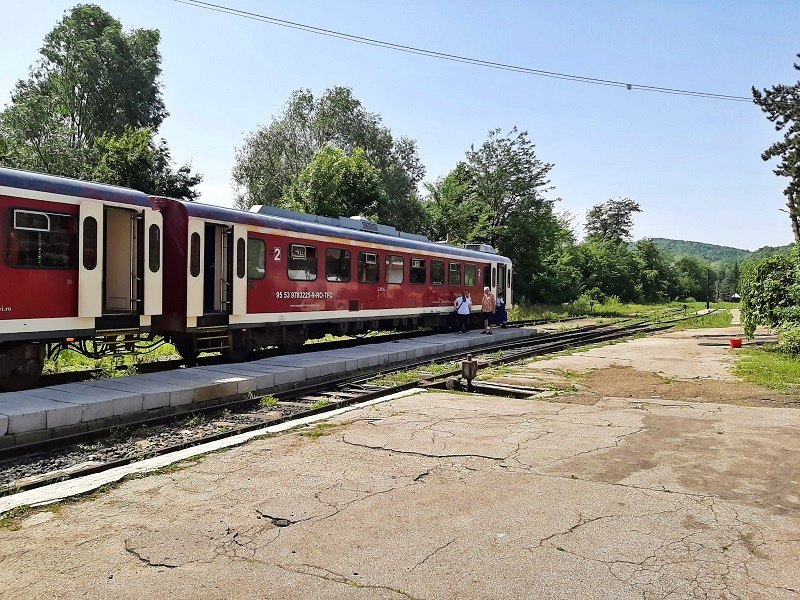
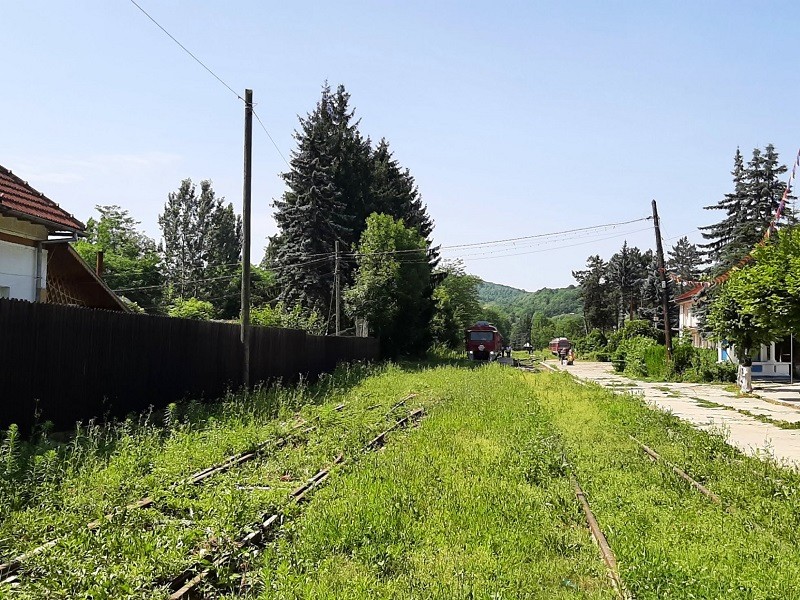
Visiting the Slanic Salt Mine
The entrance to the Slanic Salt Mine, known as Salina Slănic in Romanian, is just a short 10-minute walk away from the train station.
On your way you will pass by a statue of Mihai Cantacuzino, a wealthy landowner who was the first to open a salt mine in Slanic.
You are driven into the salt mine by minibuses departing from the ticket office.
The full price for a ticket to the Slanic Salt Mine is 45 lei (€9), with slight discounts available for children, pensioners and groups.
Do note that the Slanic Salt Mine is usually closed on Monday and Tuesday.
The first bus into the Slanic Salt Mine departs at 8am on Wednesdays, Thursdays, and Fridays, and at 9am on Saturdays and Sundays.
The last bus into the Slanic Salt Mine departs at 2:30pm on Wednesdays, Thursdays, and Fridays, and at 3:30pm on Saturdays and Sundays.
Make sure to arrive at the ticket office before these times to catch the last bus into the mine.
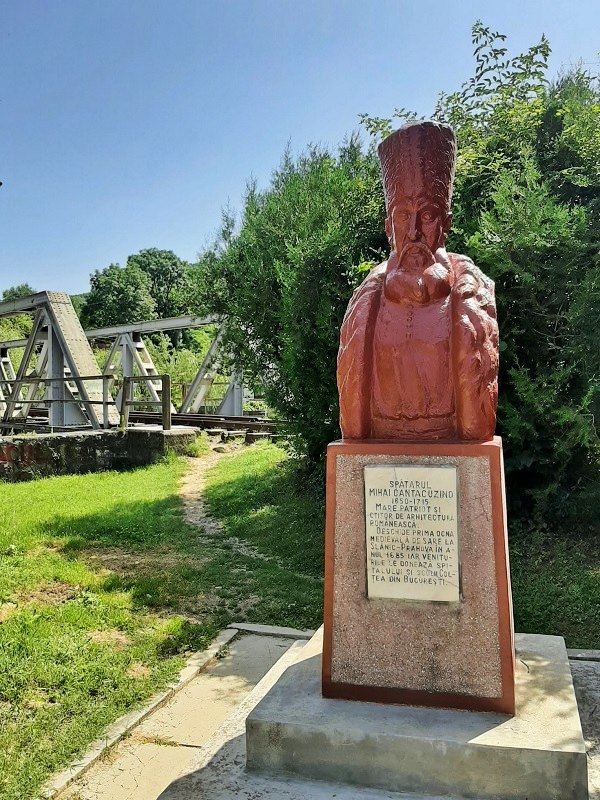
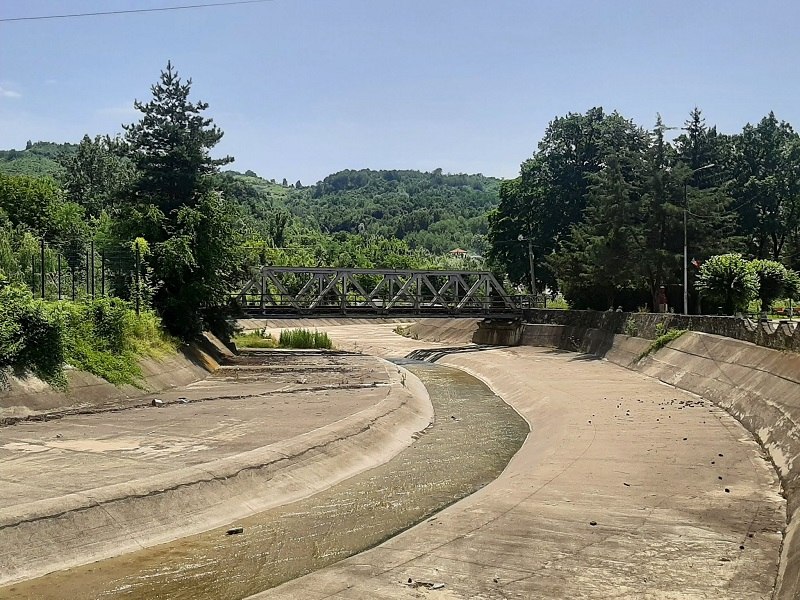

Into the mine
Minibuses typically depart from the ticket office once they are full.
The ride will first take you along some of the old mine buildings on the complex, after which you will enter a spiral tunnel and descend underground.
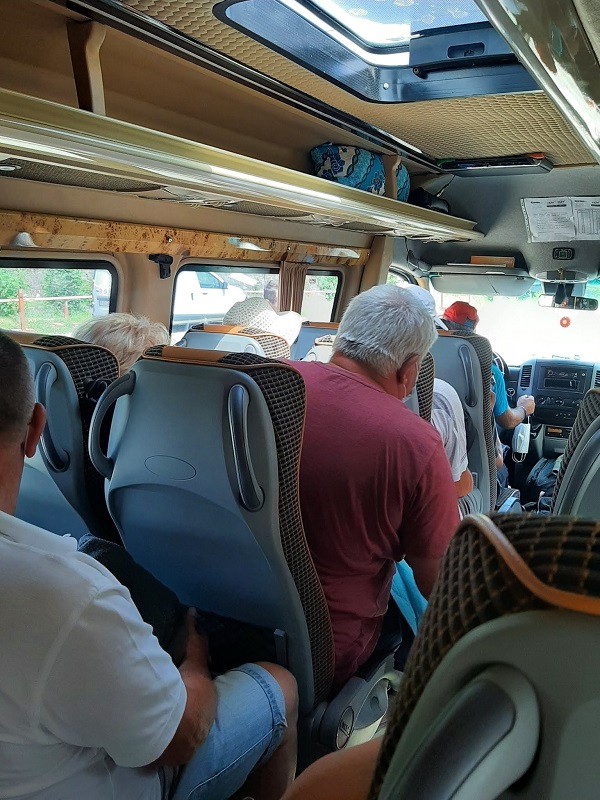


Unirea Mine
Although the Slanic Salt Mine exists out of multiple mines, only one is open for tourists.
The mine that you will visit is the Unirea Mine (Unification Mine), which is located at a depth of 208 meters below the surface.
The minibus will drop you off at the end of the underground road, from where you continue your visit on foot.
You’ll definitely appreciate the refreshing cool temperature inside the mine and the 10% lower humidity compared to the outside, especially when visiting during the summer.
Due to the natural air-conditioning, the temperature inside the Unirea Mine remains a constant 12 degrees Celsius throughout the year, so it’s advisable to bring a sweater when you visit.


Exploring the mine
You can explore the Unirea Mine at your own leisure.
The Unirea Mine, located directly below the older Carol and Mihai mines, consists of multiple chambers.
Salt extraction in the Unirea Mine commenced in 1943 and ceased in 1970 when it was relocated to the newly opened Victoria Mine.
A total of 2.9 million square metres of salt deposits have been extracted from the Unirea Mine.
The 14 trapezoidal chambers of the Unirea Mine are 54 meters high and appear absolutely massive when viewed from below.

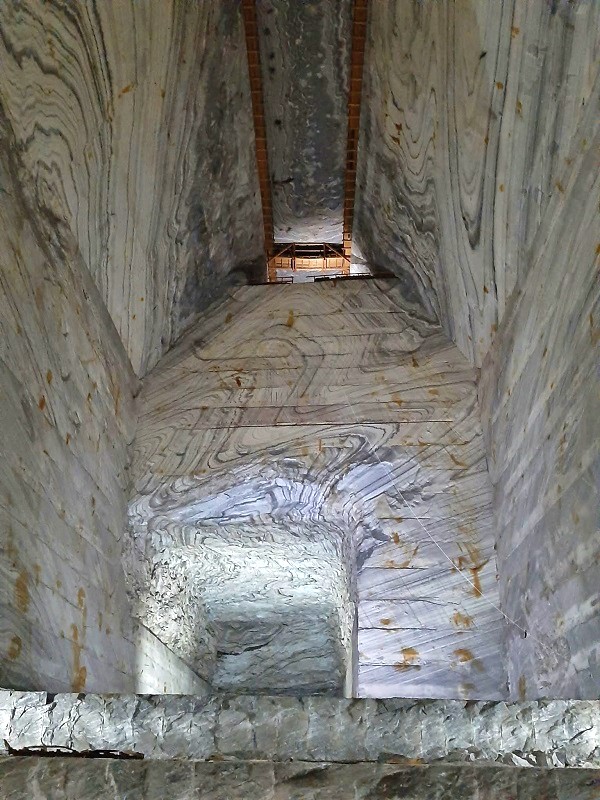

Salt extraction
Salt has been extracted from the natural deposits in the hills around Slanic for over three centuries.
The underground mines were created by drilling and blasting to extract salt deposits.
Once the salt crystals are extracted from the mine, they were crushed into finer pieces before being transported outside using conveyor belts for further processing.
Inside the mine, you can explore exhibits showcasing mining equipment and various types of salt crystals.
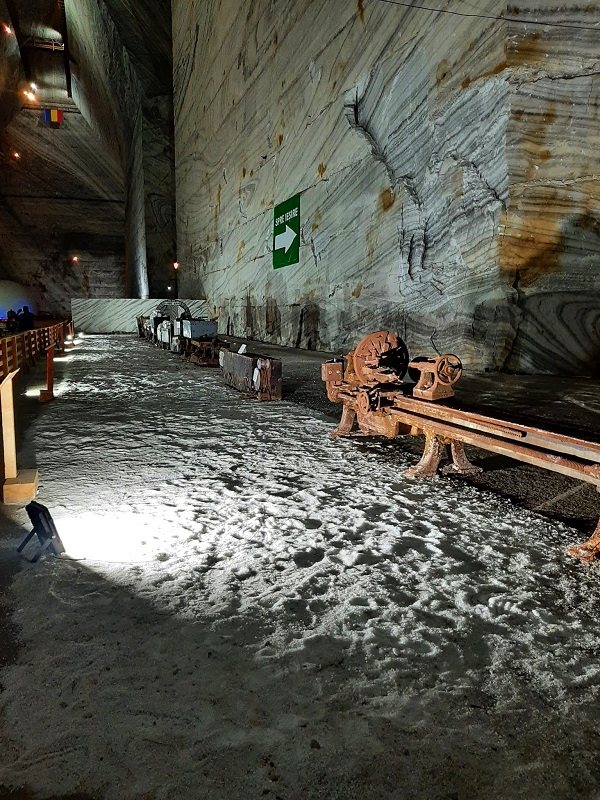
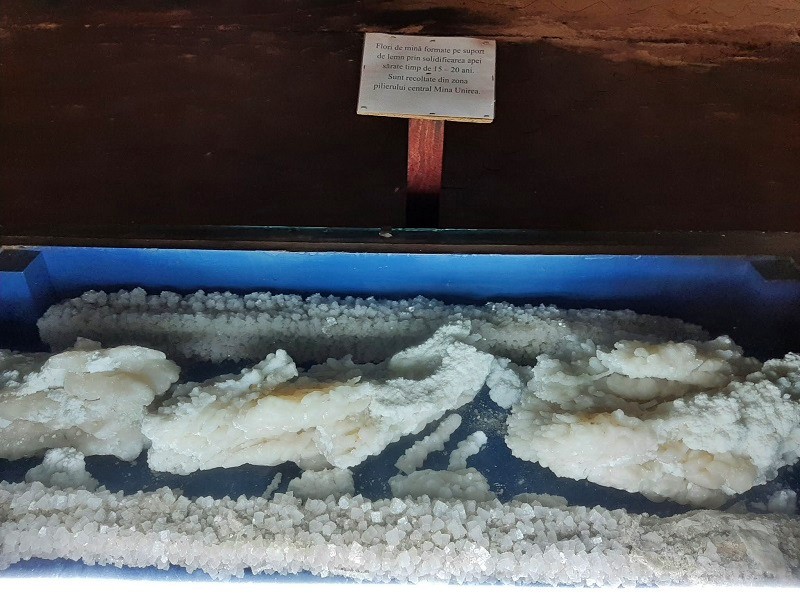
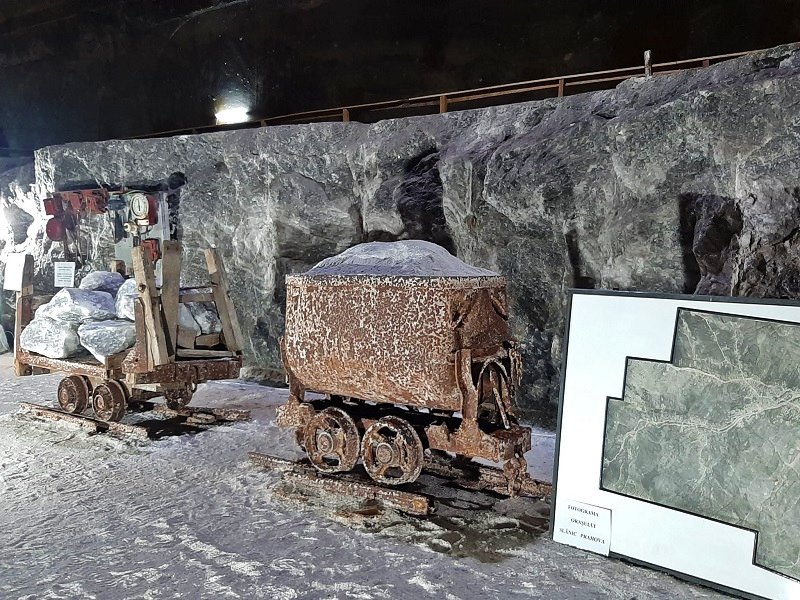
Stalactites
At a water reservoir inside the mine you can some beautifully illuminated stalactites.
These stalactites have formed through the process of mineral precipitation from saline water that drips down from the ceiling or walls of the mine.
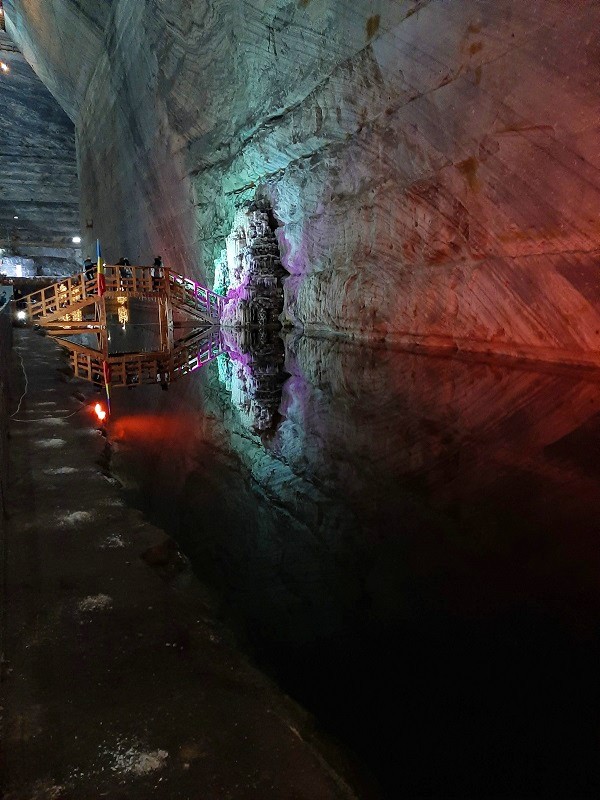

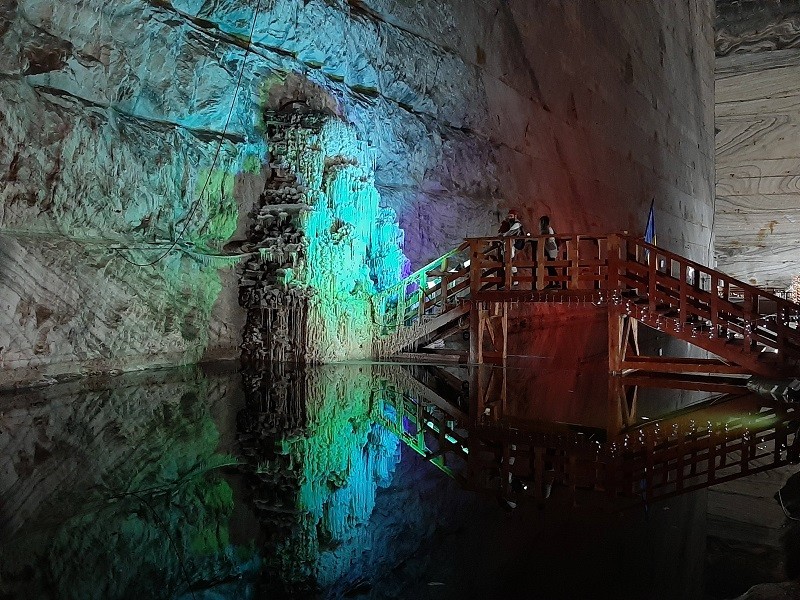
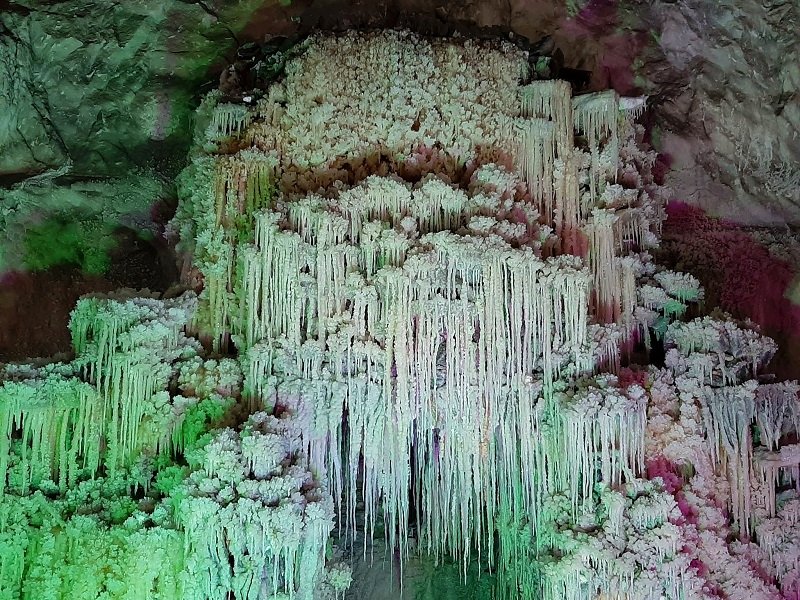
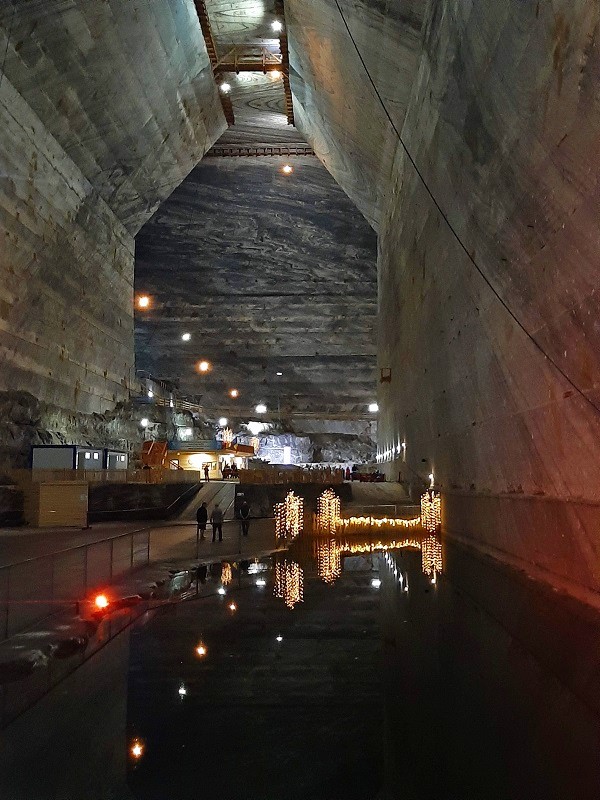
Other sights
There are a few other notable sights worth observing during your visit to the Slanic Salt Mine.
The old wooden elevator shaft is certainly impressive to see, although it is no longer in use following an accident in 2014.
In the mine, you can also admire several salt sculptures, including busts of the Roman emperor Traian and the Dacian king Decebalus.
One of the mine chambers also features a communist hammer and sickle symbol on the ceiling.
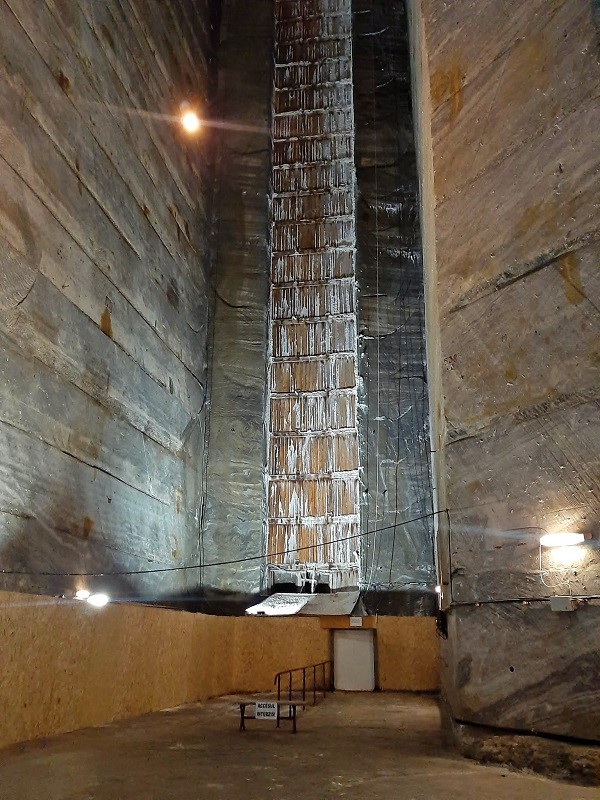

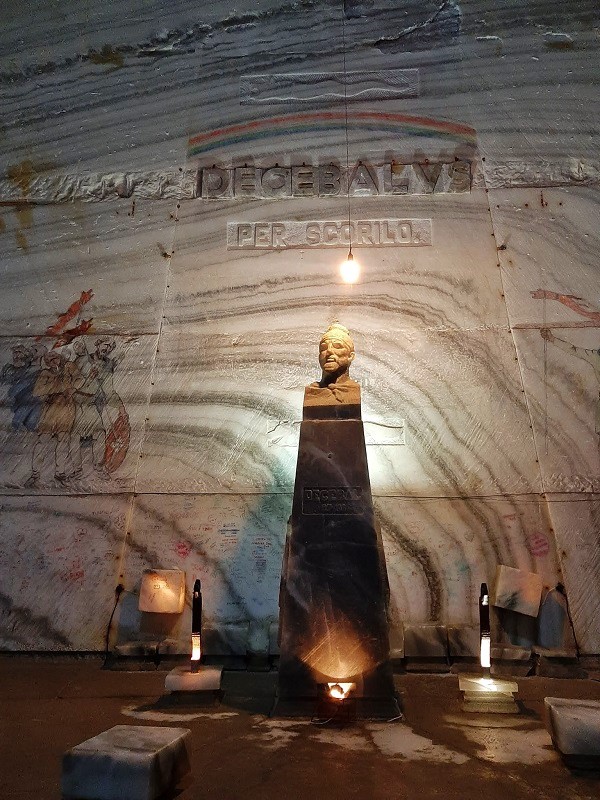
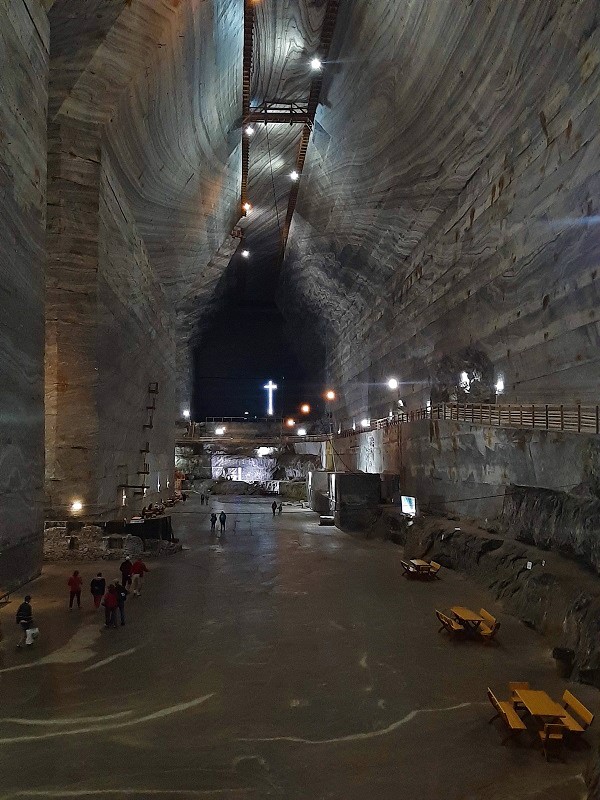

Facilities
The Slanic Salt Mine offers a wide range of facilities and activities that can be enjoyed by young and old.
Children can enjoy the kids’ play area with a bouncy castle and obstacle course, while activities such as miniature golf or football are enjoyable for kids of all ages.
A large wooden kiosk located in the heart of the mine offers a basic assortment of drinks and snacks.
The Slanic Salt Mine also features treatment rooms with beds and chairs specifically designed for visitors with respiratory problems, as the unique microclimate, salt particles and absence of allergens in the air are believed to have potential benefits for improving breathing.
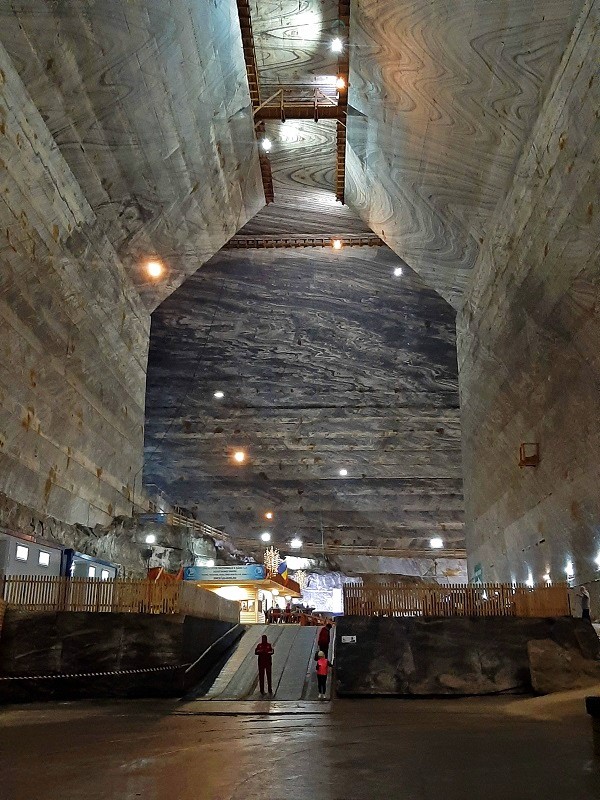


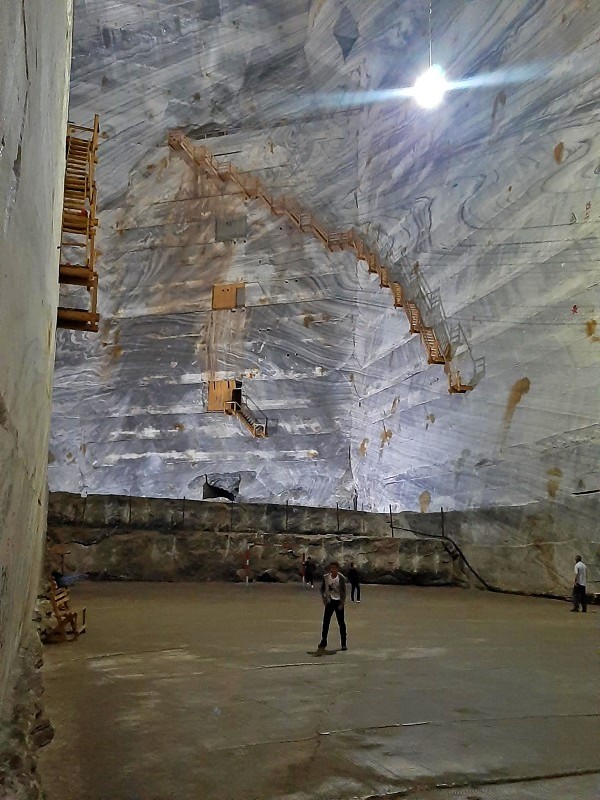
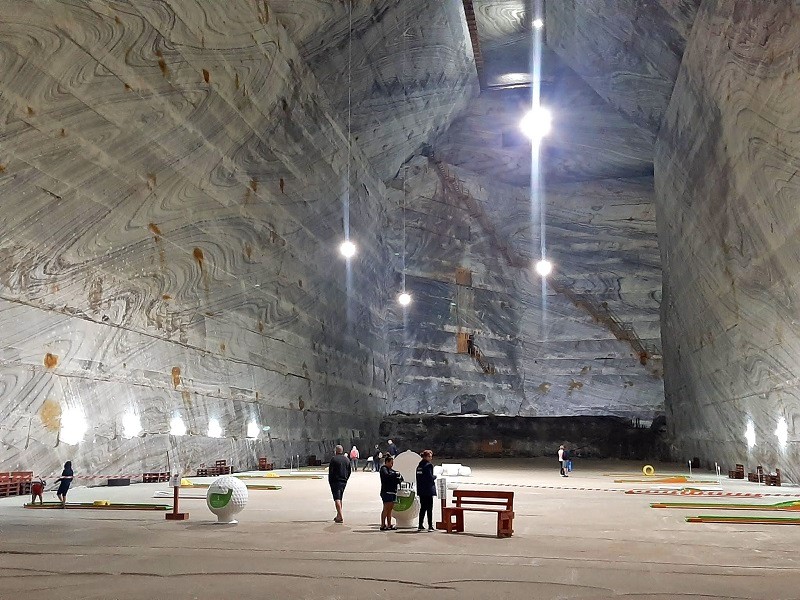
A walk through Slanic
Having visited the Slanic Salt Mine, I took a minibus back to the surface.
Once outside the mine, I decided to have a walk through the town centre of Slanic.
Located in the foothills of the Carpathian Mountains, the town of Slanic has historically been a well-known tourist resort in the wider region.
Visitors flocked to the town for its therapeutic salt waters and picturesque landscape.
Although the area directly around the train station with its communist-era blocks of flats isn’t the most attractive, there are many beautiful old houses in the immediate vicinity.



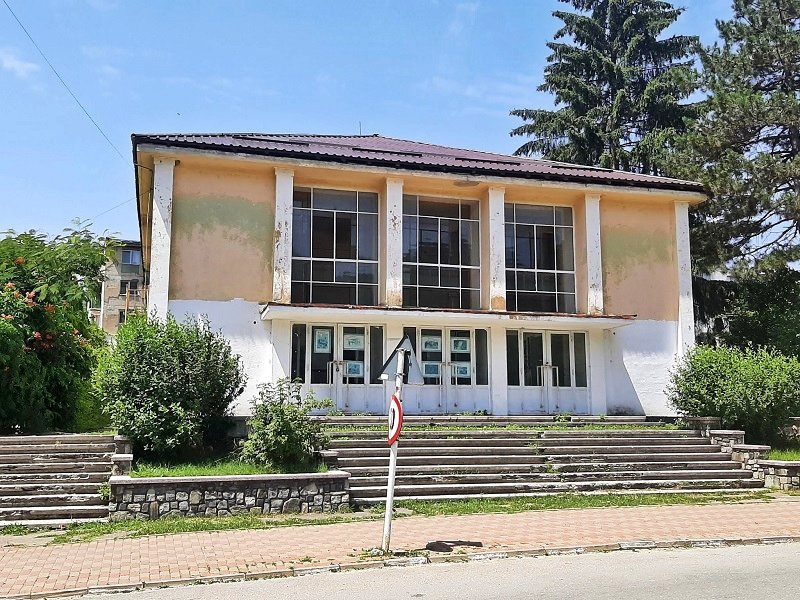

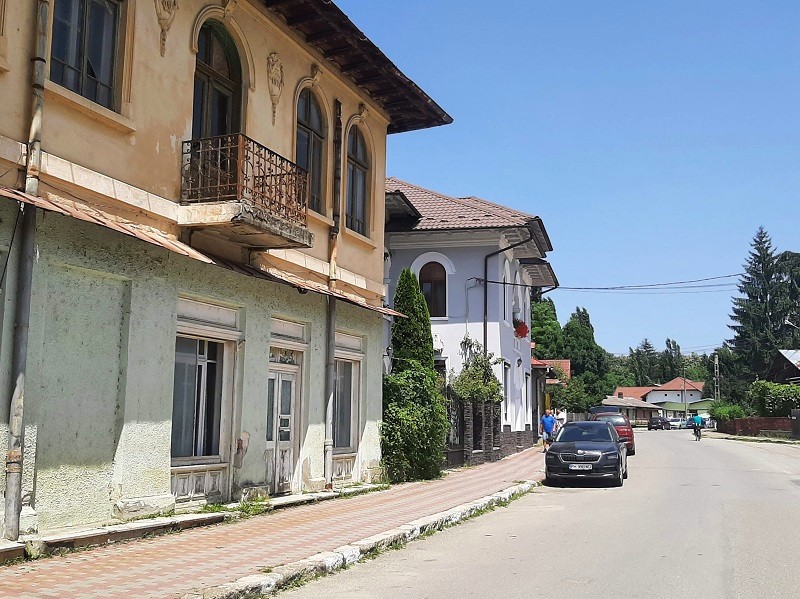

Lunch
I ended up at the shaded patio of a restaurant called Casa Cristian for lunch.
Here, I enjoyed some tasty tochitură (traditional meat stew served with polenta and grated white cheese).



Climbing the hills
As I still had plenty of time left before my train back to Bucharest, I decided to go on a hike up one of the hills located on the eastern side of Slanic.
At a certain point, I hesitated whether to continue my hike as there was an angry-looking dog barking and blocking the path.
Fortunately, the dog allowed me to pass safely.
As I made my way along the hiking trail, I was rewarded with stunning panoramic views of the town of Slanic nestled in the valley below, as well as the lush forested foothills of the Carpathian Mountains.
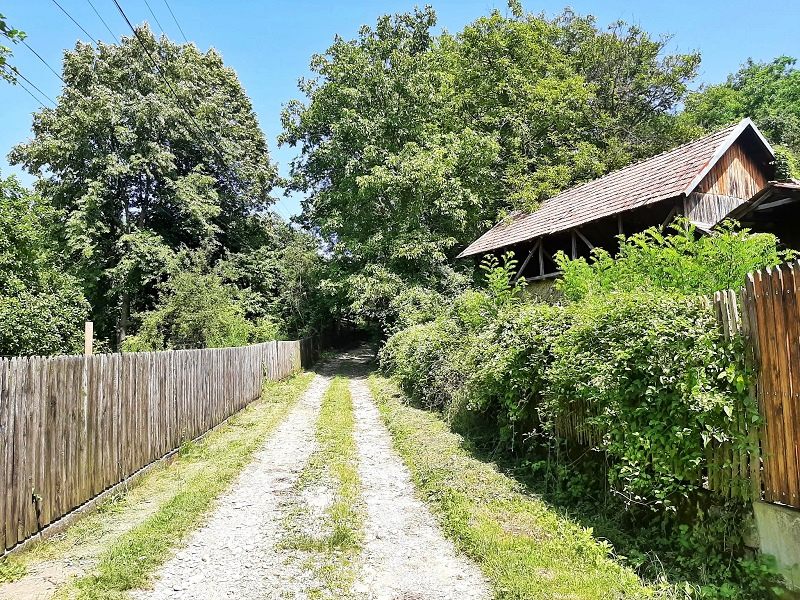
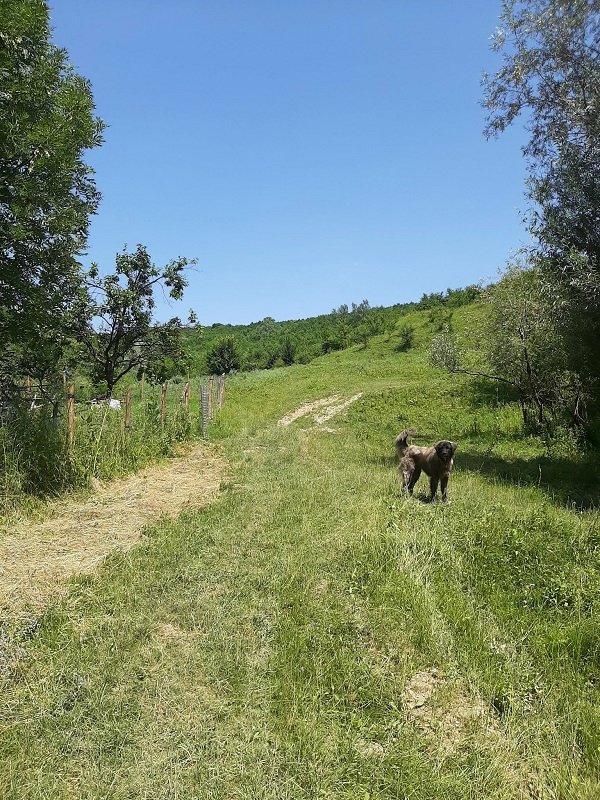
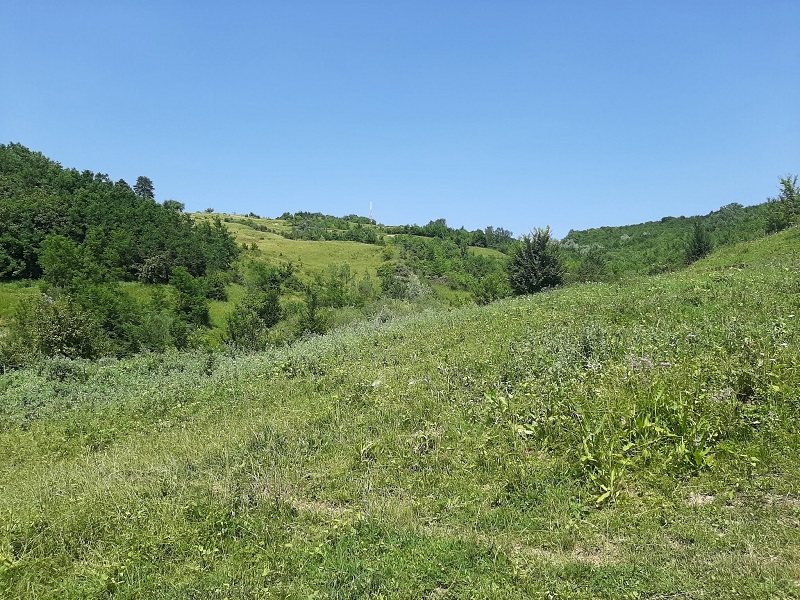
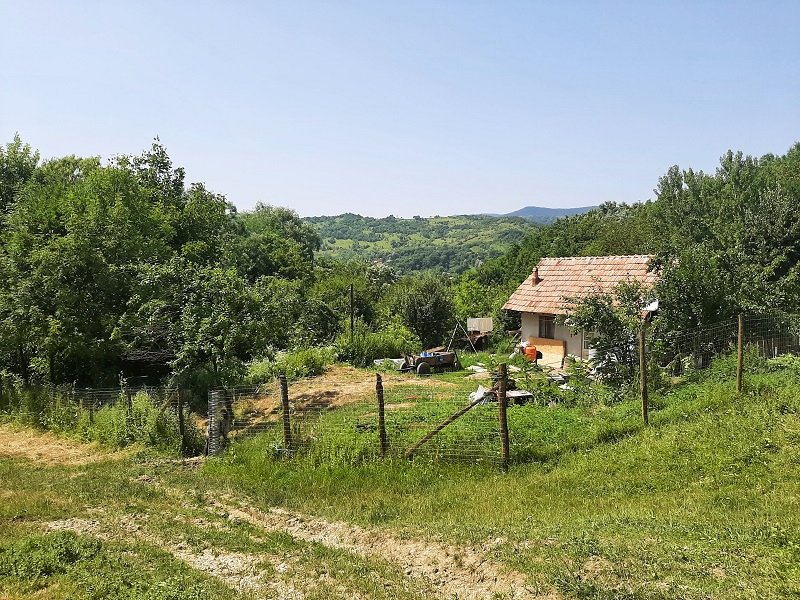
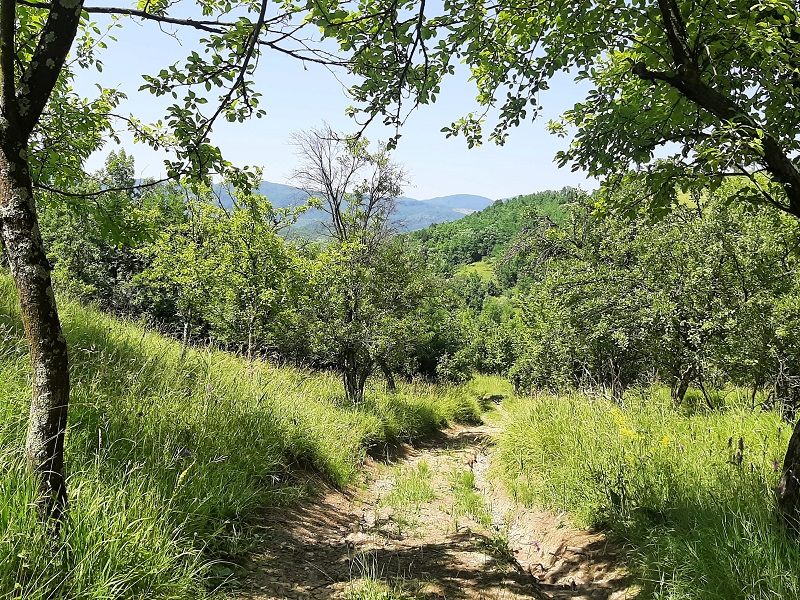
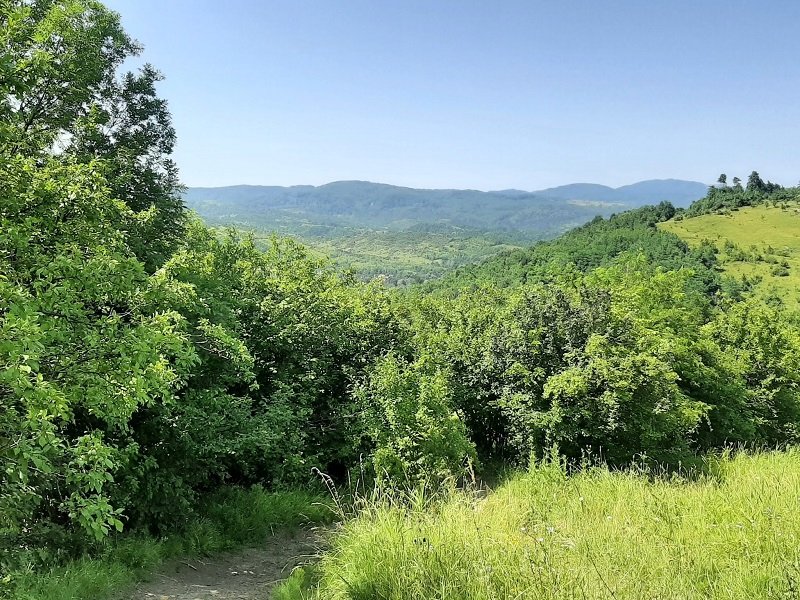

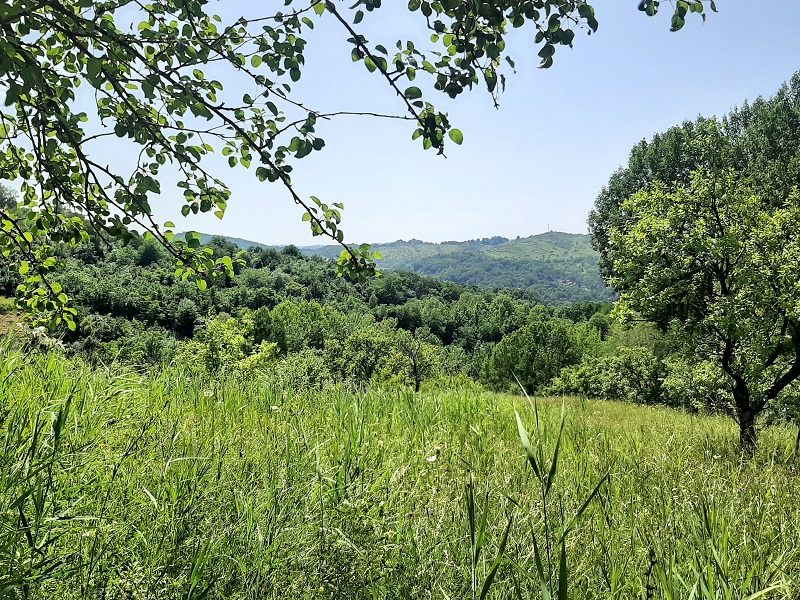

Hiking back
Despite my desire to continue my hike further uphill, I decided to turn back and descend towards the town of Slanic as I didn’t want to risk missing my train.
Besides, this way I could still indulge in a refreshing beer or two after the hike.

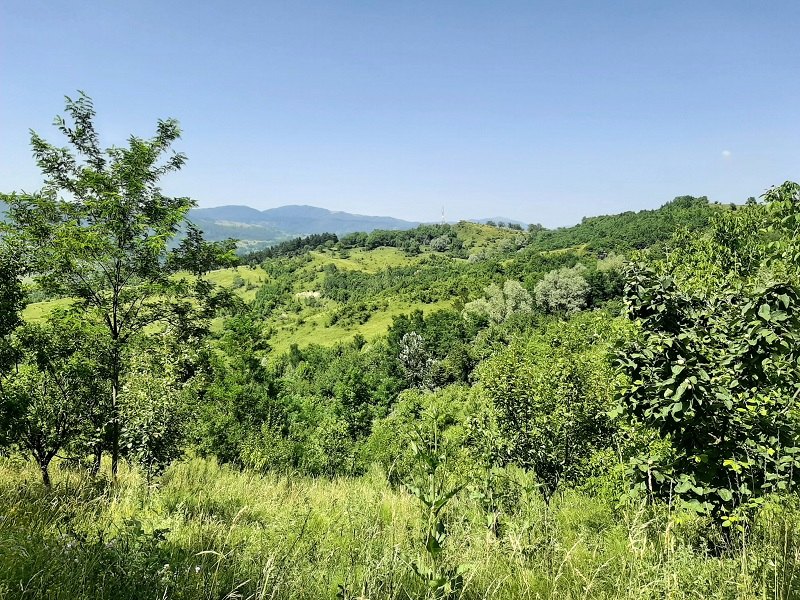

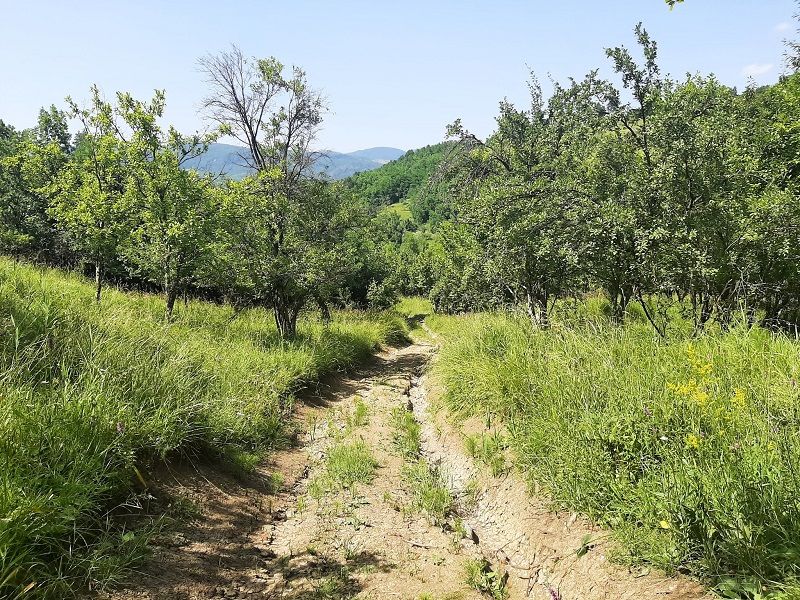
Baia Verde
As I made my way downhill, I came across Baia Verde, one of the saline swimming pools that Slanic is famous for.
The complex comprises three distinct salt lakes that were formed due to the collapse of old excavation pits.
Unfortunately, I didn’t have my swimming shorts with me, so I couldn’t take a dip in the water.
However, I did certainly enjoy my cold beer from the bar overlooking the pools.
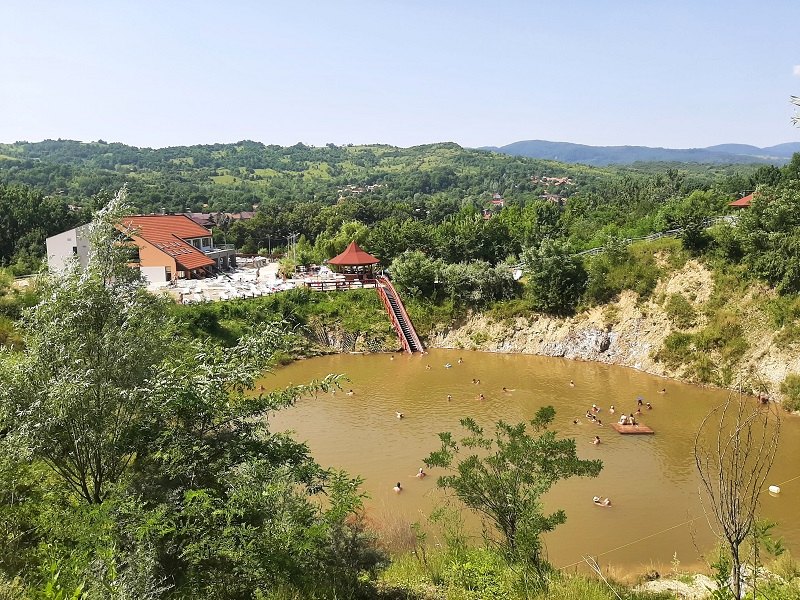

Baia Baciului
Baia Baciului, located on the west side of the town of Slanic, is another well-known salt lake where visitors can enjoy swimming.
At Baia Baciului, there are also salt rocks to explore, although I didn’t have enough time to visit them.
Instead, I enjoyed one last beer before the departure of my train at a terrace opposite the railway station.



Conclusion
The Slanic Salt Mine is a truly remarkable destination that offers visitors a captivating experience 208 meters below the surface.
With its massive chambers, stunning salt formations, and unique microclimate, one cannot help but be awed by the sheer scale of the mine.
However, Slanic is much more than just the salt mine alone.
Slanic boasts several therapeutic salt lakes where visitors can enjoy swimming and the surrounding hills offer excellent hiking opportunities for outdoor enthusiasts.
Given that Slanic can be easily reached by train, it makes for the perfect day trip from Bucharest.
Planning your trip
Trains to Slanic are operated by Transferoviar Călători and not by national operator CFR.
During the summer season there are direct trains that connect Bucharest with Slanic in 2.5 hours.
However, outside of summer it may be necessary to change trains in Ploiești.
One-way tickets for the train from Bucharest to Slanic cost around €4 to €5, depending on the specific train you take.
At the following link, you can read my full report of a ride on the scenic Bucharest to Slanic train.
Explore some other destinations with us!
In our trip report section you can find multiple reports of holidays across the world which could give you some inspiration for your next trip. These trip reports include destination guides as well as reviews of hotels, airlines and other modes of transport.
Our last two featured articles highlighted the city of Lier in Belgium and Dakar, the bustling capital of Senegal.
Make sure you subscribe to our Twitter, Facebook, and Instagram pages in order to receive instant Paliparan updates when a new article or flight deal is out!

